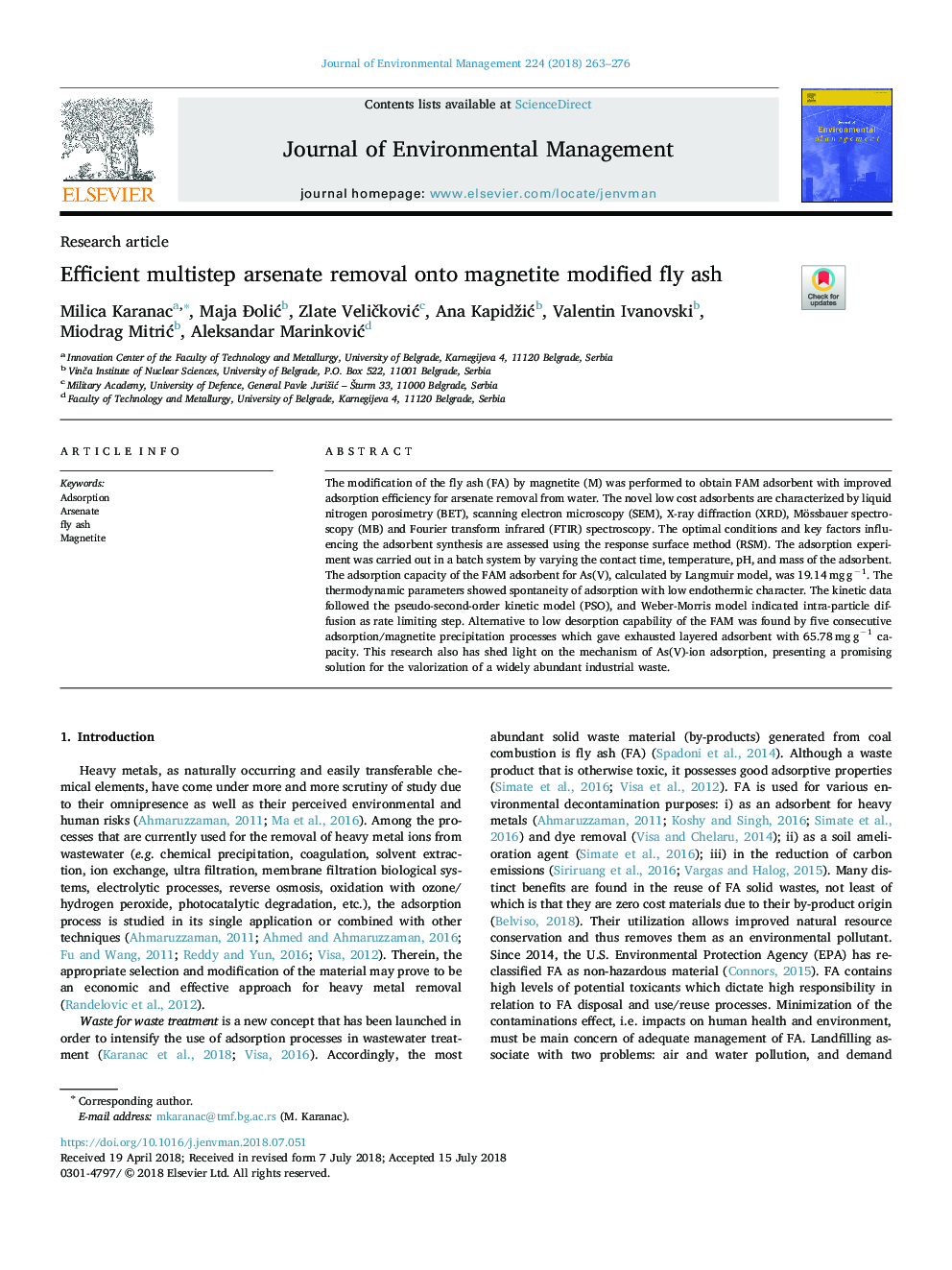| Article ID | Journal | Published Year | Pages | File Type |
|---|---|---|---|---|
| 7475649 | Journal of Environmental Management | 2018 | 14 Pages |
Abstract
The modification of the fly ash (FA) by magnetite (M) was performed to obtain FAM adsorbent with improved adsorption efficiency for arsenate removal from water. The novel low cost adsorbents are characterized by liquid nitrogen porosimetry (BET), scanning electron microscopy (SEM), X-ray diffraction (XRD), Mössbauer spectroscopy (MB) and Fourier transform infrared (FTIR) spectroscopy. The optimal conditions and key factors influencing the adsorbent synthesis are assessed using the response surface method (RSM). The adsorption experiment was carried out in a batch system by varying the contact time, temperature, pH, and mass of the adsorbent. The adsorption capacity of the FAM adsorbent for As(V), calculated by Langmuir model, was 19.14â¯mgâ¯gâ1. The thermodynamic parameters showed spontaneity of adsorption with low endothermic character. The kinetic data followed the pseudo-second-order kinetic model (PSO), and Weber-Morris model indicated intra-particle diffusion as rate limiting step. Alternative to low desorption capability of the FAM was found by five consecutive adsorption/magnetite precipitation processes which gave exhausted layered adsorbent with 65.78â¯mgâ¯gâ1 capacity. This research also has shed light on the mechanism of As(V)-ion adsorption, presenting a promising solution for the valorization of a widely abundant industrial waste.
Keywords
Related Topics
Physical Sciences and Engineering
Energy
Renewable Energy, Sustainability and the Environment
Authors
Milica Karanac, Maja ÄoliÄ, Zlate VeliÄkoviÄ, Ana KapidžiÄ, Valentin Ivanovski, Miodrag MitriÄ, Aleksandar MarinkoviÄ,
